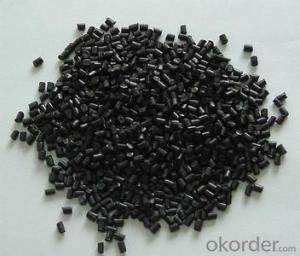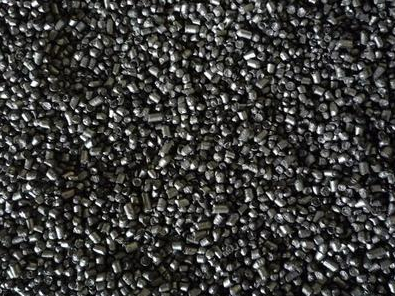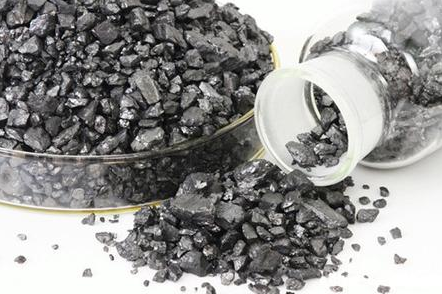carburant for casting iron and steel plant carbon additive and recarburizer
- Loading Port:
- Qingdao
- Payment Terms:
- TT OR LC
- Min Order Qty:
- 10 m.t
- Supply Capability:
- 300000 m.t/month
OKorder Service Pledge
OKorder Financial Service
You Might Also Like
Specifications of carburant:
- Carburant for casting professional manufacturer in china 15 years experience;
- Carburant for casting specification as follows:
Item No (max) | Fixed Carbon | Sulfur(max) | Ash(max) | V.M | Moisture | Grain size(90%) | Nitrogen(max) |
CA-02 | 98.50% | 0.50% | 0.80% | 0.80% | 0.50% | 1-5MM | N/A |
CA-06 | 99.00% | 0.30% | 0.50% | 0.50% | 0.50% | 1-5MM | 1000divdivM |
CA-10 | 95.00% | 0.30% | 3.50% | 1.50% | 0.50% | 1-4MM | 700divdivM |
CA-12 | 80.00% | 0.10% | 16.50% | 3.50% | 2.00% | 1-5mm | N/A |
By using the carbon additive from CNBM in producing casting, it can increase the used quantity of Scrap steel and reduce the quantity of Scrap iron, or use no Scrap iron at all, CNBM carbon additive has follows properties: high absorptive character, no residue will be left, save production cost.
- Usage used to improve the Carbon content in steel-melting and Ductile iron foundry
- Characteristica high carbon, low sulfur, with stable effect for improving the carbon content, high absorptivity of carbon.
- Apply Used in electric furnace steel smelting and cast-iron for improving the carbon content
- Grain size normal size0.3-3mm 1-4mm1-3mm3-5mm,3-8mm,5-10mm or per as customers special requirement.
- Q:How does carbon affect the pH of water bodies?
- Carbon can affect the pH of water bodies through the process of carbon dioxide dissolution. When carbon dioxide dissolves in water, it forms carbonic acid, leading to a decrease in pH and making the water more acidic. This can have significant impacts on aquatic ecosystems and the organisms that inhabit them.
- Q:What are the impacts of carbon emissions on the stability of polar ice caps?
- The stability of polar ice caps is significantly affected by carbon emissions, which arise primarily from the burning of fossil fuels. This process releases substantial amounts of carbon dioxide into the atmosphere, a greenhouse gas that traps heat and contributes to global warming and climate change. Consequently, the ice caps in the polar regions, which are extremely sensitive to temperature changes, experience accelerated melting as the Earth's temperature rises due to increased carbon emissions. This leads to a rise in sea levels, with far-reaching consequences for coastal regions globally, including increased flooding, erosion, and the loss of valuable coastal ecosystems. Furthermore, the preservation of the polar ice caps is vital for maintaining the Earth's climate balance. These ice caps play a crucial role in reflecting sunlight back into space, serving as a natural cooling mechanism for the planet. However, as they melt, less sunlight is reflected, resulting in more absorption by the Earth's surface and exacerbating the warming effect. This creates a feedback loop, where the melting of ice caps leads to further warming, causing more ice to melt. The impacts of carbon emissions on polar ice caps extend beyond rising sea levels and climate change. The loss of ice also disrupts the delicate balance of ecosystems in these regions. Polar ice caps provide habitat and sustenance for a diverse range of organisms, including polar bears, seals, and various species of birds. Consequently, the melting of ice disrupts these ecosystems, leading to declines in wildlife populations and potential extinctions. Moreover, the melting of polar ice caps also has repercussions for global ocean currents and weather patterns. The melting ice forms cold, dense water that sinks to the bottom of the ocean and drives crucial oceanic circulation patterns. Changes in these patterns can have far-reaching consequences, such as altering the distribution of marine species, impacting fisheries, and influencing regional climates. To mitigate the impacts of carbon emissions on polar ice caps, it is essential to reduce greenhouse gas emissions and transition to cleaner and renewable energy sources. International initiatives, such as the Paris Agreement, are aimed at limiting global warming and reducing carbon emissions to prevent further melting of the ice caps. Additionally, supporting research and monitoring programs in polar regions can enhance our understanding of these complex systems and facilitate the development of effective conservation strategies.
- Q:What is the density of carbon steel and alloy steel?
- Chromium molybdenum aluminum steel 7.65Tungsten 9 high speed tool steel 8.3Tungsten 18 high speed tool steel 8.7High strength alloy steel 7.82Bearing steel 7.81Stainless steel 0Cr13, 1Cr13, 2Cr13, 3Cr13, 4Cr13, Cr17Ni2, Cr18, 9Cr18, Cr25,, Cr28 7.75Cr14, Cr17 7.70Cr18Ni9, 1Cr18Ni9, Cr18Ni9Ti, 2Cr18Ni9 7.851Cr18Ni11Si4A1Ti 7.52Stainless steel 1Crl8NillNb, Cr23Ni18 7.92Cr13Ni4Mn9 8.53Cr13Ni7Si2 8
- Q:How does carbon dioxide affect global warming?
- Global warming is caused by carbon dioxide, one of the main greenhouse gases. When carbon dioxide is released into the atmosphere, it traps heat from the sun and prevents it from escaping into space. This leads to a rise in the Earth's overall temperature, a phenomenon known as the greenhouse effect. The Earth's atmosphere acts like the walls of a greenhouse, trapping heat and warming the planet. Human activities, such as burning fossil fuels, deforestation, and industrial processes, have significantly increased the amount of carbon dioxide in the atmosphere. These activities have released large amounts of carbon dioxide that would have otherwise remained underground for millions of years. As a result, the concentration of carbon dioxide in the atmosphere has reached levels not seen in hundreds of thousands of years. The increase in carbon dioxide levels intensifies the greenhouse effect and worsens global warming. Rising temperatures have negative effects on the Earth's climate system, including the melting of polar ice caps and glaciers, which leads to rising sea levels. This poses a threat to coastal communities and low-lying areas, increasing the risk of flooding and erosion. Additionally, global warming disrupts weather patterns, resulting in more frequent and severe extreme weather events like hurricanes, droughts, and heatwaves. Moreover, global warming impacts ecosystems and biodiversity. Many species are unable to adapt to rapid temperature changes, resulting in habitat loss and an increased risk of extinction. Coral reefs, for instance, are highly sensitive to temperature changes and are experiencing widespread bleaching events due to warmer ocean temperatures. Efforts are being made to reduce greenhouse gas emissions and mitigate the effects of carbon dioxide on global warming. Measures such as transitioning to renewable energy sources, improving energy efficiency, reforesting, and implementing sustainable practices are being taken to curb carbon dioxide emissions and lessen the impacts of global warming.
- Q:Carbon emissions trading stocks latest list of carbon emissions trading stocks what?
- Deason shares and Evergreen Group (biomass industry development leading countries to cope with climate change "(2014-2020)" an important direction to encourage); Yongan forestry (the potential target of forest carbon sequestration forestry circular economy demonstration enterprise). In addition, according to statistics, Huayin electric power (600744), Shenzhen (000027) and other energy shares of Shenzhen emissions exchange.
- Q:What is carbon sequestration and how does it work?
- Carbon sequestration is the process by which carbon dioxide (CO2) is captured and stored, preventing it from being released into the atmosphere and contributing to climate change. This process is vital in combating global warming, as CO2 is a greenhouse gas that traps heat and leads to the Earth's temperature rising. There are several methods of carbon sequestration, but the most commonly used ones include terrestrial, oceanic, and geological sequestration. Terrestrial sequestration involves capturing CO2 from the atmosphere and storing it in plants, trees, and soil. This can be achieved through afforestation (planting new forests), reforestation (restoring deforested areas), and adopting sustainable agricultural practices that enhance soil carbon storage. Oceanic sequestration, on the other hand, involves storing CO2 in the oceans. This method relies on the natural ability of the oceans to absorb and store large amounts of CO2. By enhancing the ocean's capacity to capture CO2, such as through the use of algae or other marine plants, we can effectively reduce the concentration of CO2 in the atmosphere. Geological sequestration involves capturing CO2 from industrial sources, such as power plants or factories, and injecting it deep underground into geological formations. These formations, such as depleted oil and gas reservoirs or saline aquifers, act as natural storage sites for the captured CO2. Over time, the injected CO2 becomes trapped and mineralizes, permanently storing it away from the atmosphere. Additionally, carbon sequestration can also occur through technological advancements, such as direct air capture (DAC) and carbon capture and storage (CCS). DAC involves using machines or devices to directly capture CO2 from the air, while CCS focuses on capturing CO2 emissions from industrial processes before they are released into the atmosphere. Once captured, the CO2 can be transported and stored underground, either in geological formations or in depleted oil and gas reservoirs. Overall, carbon sequestration is a crucial tool in mitigating climate change. By capturing and storing CO2, we can reduce the concentration of greenhouse gases in the atmosphere, helping to stabilize the Earth's climate. However, it is important to note that while carbon sequestration is an important solution, it should not be seen as a standalone solution. Combining carbon sequestration with other mitigation strategies, such as reducing emissions and transitioning to renewable energy sources, is essential for effectively combating climate change.
- Q:How to distinguish carbon rods to identify carbon fishing rods?
- I'm also waiting to learn! It seems all very busy, the masters are not on-line
- Q:How is carbon used in the production of pigments?
- Carbon is commonly used in the production of pigments due to its ability to create vibrant and deep colors. Carbon-based pigments, also known as carbon blacks, are produced by the incomplete combustion of hydrocarbons, such as natural gas or petroleum. The carbon particles produced during this process are then processed and purified to create a fine powder that can be used as a pigment. These carbon-based pigments have a wide range of applications in various industries, including inks, paints, plastics, and cosmetics. In the production of inks, carbon black is often added to improve the color intensity and opacity of the ink. It is also used in the manufacturing of black pigments for paints and coatings, providing a rich and deep black color. Carbon-based pigments are also used in the production of plastics. Adding carbon black to plastic materials can enhance their UV resistance, making them more durable and long-lasting. This is particularly important in outdoor applications where exposure to sunlight can cause fading and degradation. Additionally, carbon-based pigments are commonly used in the cosmetics industry. They are added to various cosmetic products, such as eyeliners, mascaras, and lipsticks, to create intense black or dark shades. Carbon black pigments are preferred in cosmetics due to their stability and ability to deliver consistent color. In conclusion, carbon is widely used in the production of pigments due to its ability to create vibrant and deep colors. Carbon-based pigments find applications in various industries, including inks, paints, plastics, and cosmetics, where they enhance color intensity, provide UV resistance, and deliver rich black shades.
- Q:What's the difference between blue and red Panasonic batteries (carbon)?
- Blue is leak, proof, general, Purpose, general use battery (leak proof)Red is the long life long life battery (suitable for watches and clocks and other small power appliances)And heavy duty green seems to be good for high power appliances, such as toy cars
- Q:How does carbon contribute to air pollution?
- Carbon contributes to air pollution primarily through the emission of carbon dioxide (CO2) and carbon monoxide (CO) into the atmosphere. The burning of fossil fuels, such as coal, oil, and natural gas, releases large amounts of carbon dioxide, a greenhouse gas that contributes to global warming and climate change. This increased level of CO2 in the atmosphere traps heat, leading to the greenhouse effect and subsequent rise in global temperatures. Additionally, incomplete combustion of fossil fuels and biomass can release carbon monoxide, a toxic gas that can have detrimental effects on human health. Carbon monoxide is particularly dangerous as it binds to hemoglobin in the blood, reducing its oxygen-carrying capacity and potentially causing asphyxiation. Furthermore, carbon-containing compounds such as volatile organic compounds (VOCs) contribute to air pollution. VOCs are released from various sources, including industrial processes, vehicle emissions, and the use of solvents in paints and cleaning products. These compounds react with other pollutants in the atmosphere to form ground-level ozone, a major component of smog. Ozone can cause respiratory problems, eye irritation, and other health issues when inhaled. In conclusion, carbon contributes to air pollution through the emission of carbon dioxide, carbon monoxide, and volatile organic compounds. These pollutants have significant impacts on climate change, human health, and the overall quality of the air we breathe. It is crucial to reduce carbon emissions and adopt sustainable practices to mitigate the negative effects of carbon on air pollution.
1. Manufacturer Overview |
|
|---|---|
| Location | |
| Year Established | |
| Annual Output Value | |
| Main Markets | |
| Company Certifications | |
2. Manufacturer Certificates |
|
|---|---|
| a) Certification Name | |
| Range | |
| Reference | |
| Validity Period | |
3. Manufacturer Capability |
|
|---|---|
| a)Trade Capacity | |
| Nearest Port | |
| Export Percentage | |
| No.of Employees in Trade Department | |
| Language Spoken: | |
| b)Factory Information | |
| Factory Size: | |
| No. of Production Lines | |
| Contract Manufacturing | |
| Product Price Range | |
Send your message to us
carburant for casting iron and steel plant carbon additive and recarburizer
- Loading Port:
- Qingdao
- Payment Terms:
- TT OR LC
- Min Order Qty:
- 10 m.t
- Supply Capability:
- 300000 m.t/month
OKorder Service Pledge
OKorder Financial Service
Similar products
New products
Hot products

































